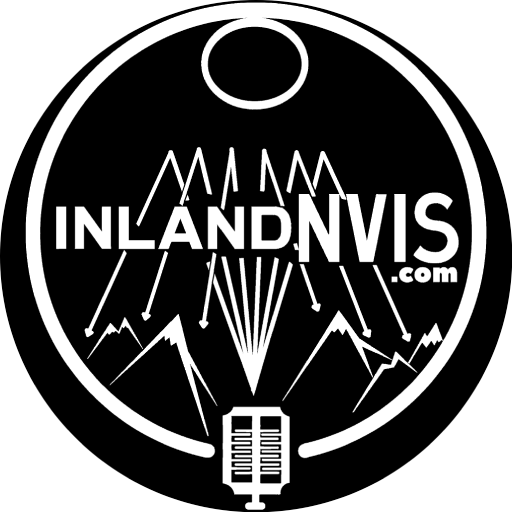What is NVIS?
NVIS (Near Vertical Incidence Skywave) is a radio frequency propagation technique used by HF radio operators to bounce signals off the ionosphere at a very high angle directly overhead. The reflected signals then fall back to earth over a relatively uniform coverage area from 0 miles to about 300 miles away from the transmitting station thus allowing for local communications using relatively low power.
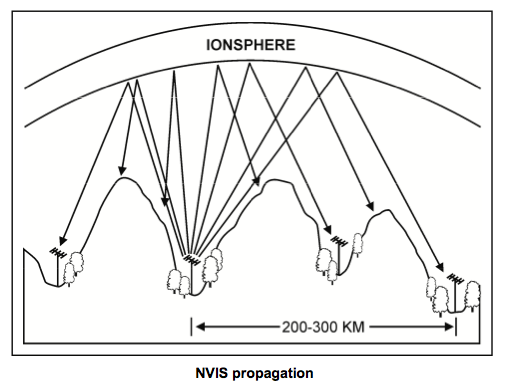
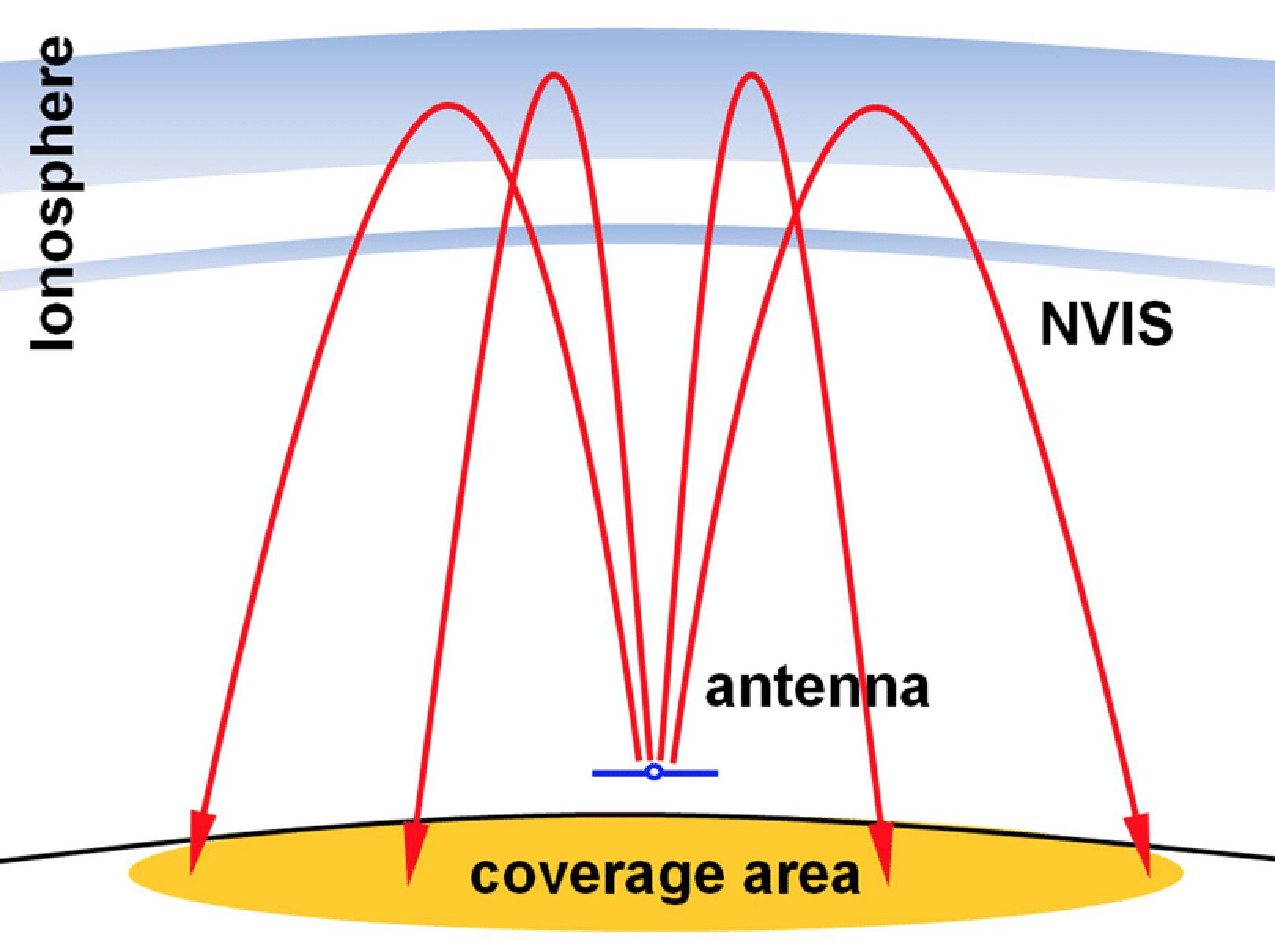
For NVIS to work, the operating channels must be below the Critical Frequency, the highest frequency where signals radiated straight up will be returned to Earth by the ionosphere. Above that frequency, signals pass off into space, even though they may be reflected back when striking the ionosphere at flatter angles. Generally the critical frequency may get as high as 12 MHz in the tropics or 9 MHz at higher latitudes, depending on the current ionospheric conditions, so 160m, 80m, and 40m (and 60m where it is available) are the most likely bands to use. It varies throughout the day, with the seasons, and with the 11-year sunspot cycle, as well as with latitude.
At the other end of the spectrum, the minimum frequency is generally determined by RF absorption in the D layer, which increases with ionization. Unlike the maximum frequency, increasing power may allow sufficient signals in marginal conditions. When D layer absorption is excessive at the Critical Frequency, then NVIS won’t work.
Successful NVIS operation requires being able to change frequency to suit current conditions, rather than making assumptions and hoping the ionosphere will cooperate.
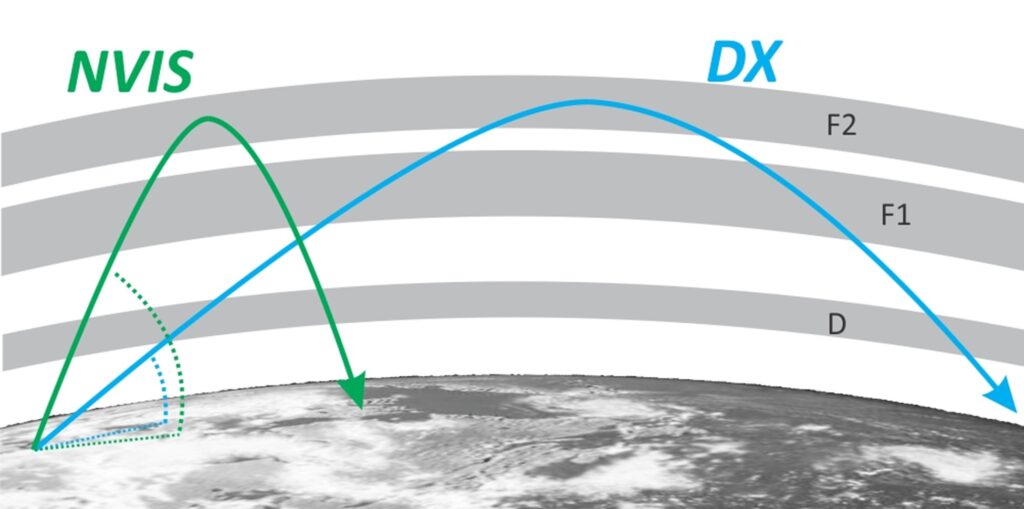
To understand HF radio communications you must understand that there are three main types of radio propagation:
- Ground wave, where the signal is usually vertically polarized (perpendicular to the surface of the Earth) and usually a low frequency. Ground wave is the propagation mode for most daylight AM radio broadcast stations; the radio waves actually hug the surface of the Earth and travel along the ground. Geologic discontinuities like mountains, rivers, and deep gorges attenuate ground wave propagation, as does the absorption of the RF by the ground. This propagation is inversely proportional to frequency; the higher the frequency, the quicker it attenuates.
- Skywave, where the signal travels from the transmitting antenna to the receiving antenna by reflecting one or more times off any one of several layers of the ionosphere. It may include reflection from the ground in between as well. This includes NVIS as well as skip communication, auroral reflection, Sporadic E skip, and tropospheric ducting, among others. This type of propagation is the most common propagation mode for HF radio communication. While the signals may be horizontally, vertically or circularly polarized by the transmitting antenna, the reflected signal can arrive at the receiving antenna with any polarization due to their reflections from the ionosphere and/or the earth. To reiterate, NVIS is a skywave propagation type, because the signal bounces off the ionosphere and comes back to Earth.
- Line of sight, (LOS) where the transmitting antenna and the receiving antenna are in view of one another, and propagation is not by means of ionospheric reflections or by ground wave. This propagation can be horizontally, vertically or circularly polarized. LOS signals can be bounced off structures or geologic features like cliffs, too, or refracted off mountain tops, and while the purist might argue that these are not line of sight anymore, the generally accepted definition includes such reflections. Much VHF and UHF communication is LOS, although there are exceptions.
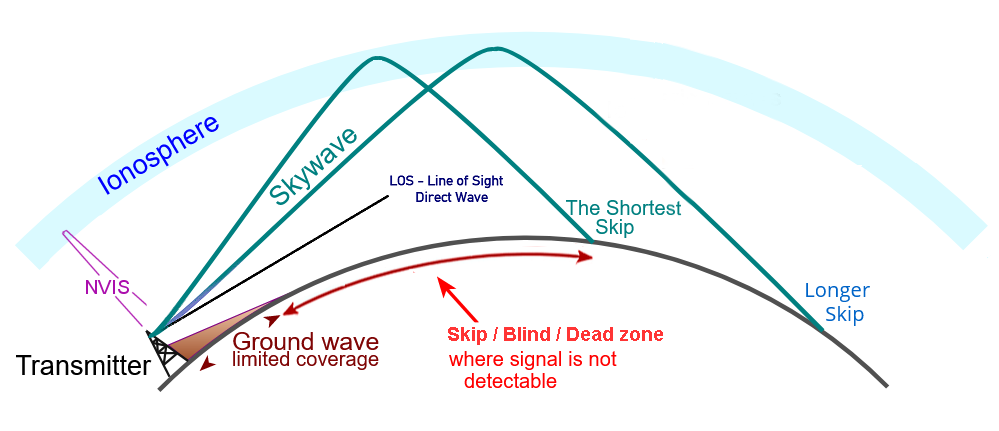
NVIS does not use VHF or UHF frequencies, does not use multiple hops or cover great distances, does not require high antennas, and does not typically use high power.
History of NVIS
NVIS was first discovered or developed by the German Army in World War II, while engaged with the Soviet Union on the Eastern Front. What they found was that while their excellent upper HF/lower VHF radios, developed during the late 1930s during the run-up to the solar peaks of Cycle 17 (1937 to 1939), worked very well for long haul HF communication, they had great difficulty using these radios for intermediate communication between groups or columns. Their columns were often too far away for LOS communication and too close for HF skip. Amateur operators (Hams) today call that being in the “skip Zone.”

In modern technical terms, the F layer direct reflection frequency (FoF2) required for short range skip would have been too low for many of their radios. So the Germans started using a radio with a lower frequency, originally intended for infantry use, and created special horizontal dipole and loop antennas mounted on their vehicles to give their lower frequency signals maximum amplitude directly up. Here is a photograph of Heinz Guderian’s command vehicle showing a NVIS cage antenna. One can also see the extendable mast used for VHF in the center.

During D Day and again during the Vietnam War, the US military also had issues keeping in touch with various elements of their forces, especially in rugged highlands terrain. The answer was, again, NVIS, using low frequency low elevation horizontal antennas to maintain communications.
Today, NVIS communication is practiced and used by military organizations and their affiliates, as well as various members of the preparedness community, to provide reliable, fast, and secure communications with lower probability of DF location.
